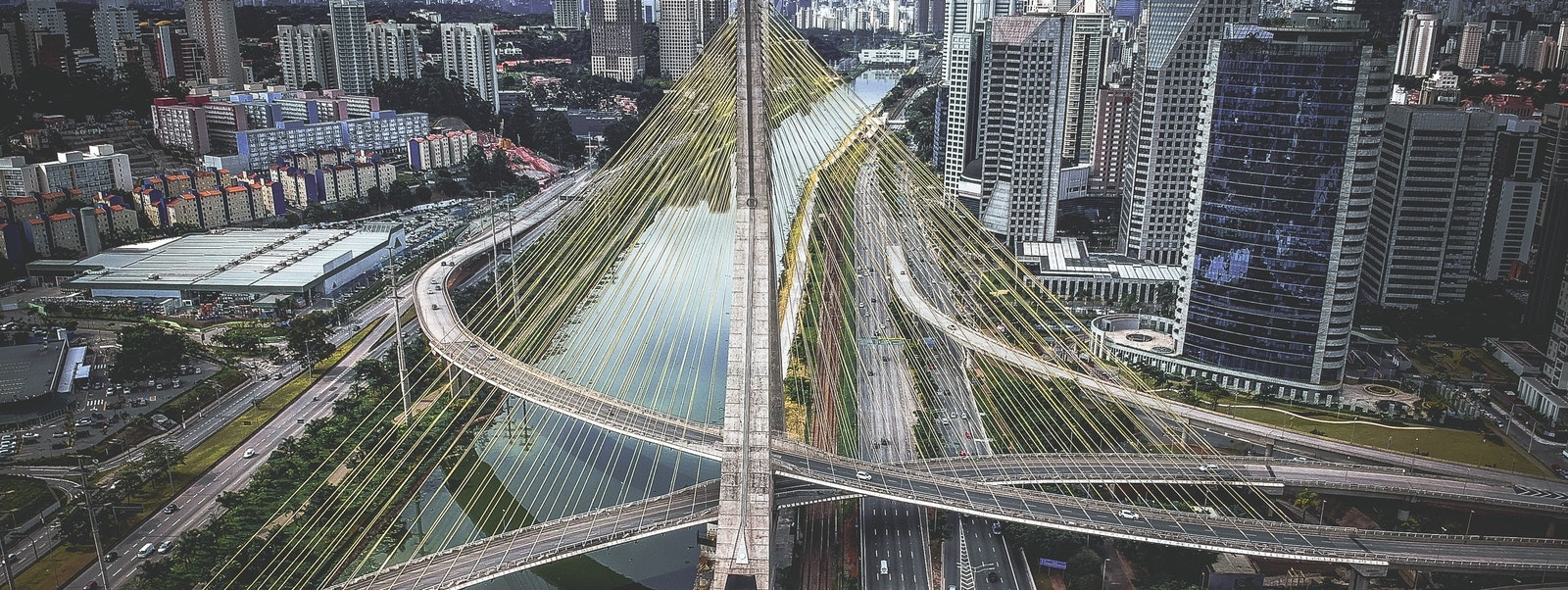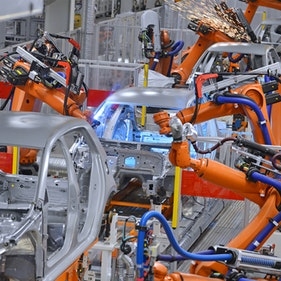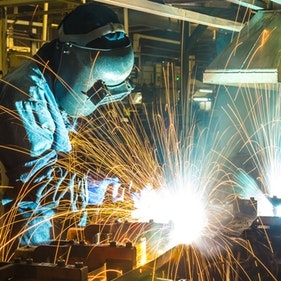Where previous tech transformations in the auto industry were companywide (such as installing personal computers) or focused on improving front-line operations, the digital revolution is pushing automakers to up their game. Instead of simply replacing line workers with robots, companies need to upgrade their existing workforces to perform new digital tasks.
Product disruptions such as autonomous driving and mobility services only represent the outward manifestations of change. Underneath the surface are the innovations that will power the industry going forward: big data, advanced analytics, artificial intelligence (AI), automated back-office processes, and service robots. To succeed, automakers need to pursue a scarce supply of high-tech workers and replace and/or retrain current staff.
THE AUTOMOTIVE WORKFORCE WILL SHIFT IN SIZE, SHAPE, AND REQUIRD SKILLS
In each of the past three decades, automakers captured 20 percent productivity improvements on average, mainly due to automation, outsourcing, and standardization. In the next five to 10 years, automation and outsourcing of white-collar jobs could drive even greater gains. Expressed in terms of full-time employees (FTEs), this change could equal a reduction in an automaker’s workforce of up to 30 percent in selected functions and cause a significantrecalibration in the type of tasks the workers will perform. (See Exhibit 1.)
Exhibit 1: Workforce Reductions Driven By Automation
Activity-based analysis specific to the organization’s distribution of employees across the value chain is required for specific projections

In this context, automation and machine learning will affect white-collar processing tasks the most. With regards to functionality, digitization could affect vehicle financing in contract origination and management processes; and inpurchasing, companies may be able to use web crawlers to increase efficiency and machine learning to plot category strategies.
Different white-collar functions will have their own specific staffing challenges. For example, functions like R&D, aftersales, financing, and sales and marketing need to maintain important elements of their traditional core competencies while integrating more digitally fluent workers. By contrast, in purchasing, buyers will greatly benefit from an automation-driven reduction in administrative work, freeing them to work with suppliers to reduce product costs, manage complexity and improve reliability. While cuts in headcount in this area will be significant, the need to replace current staff with digital experts should be less extensive (although some retraining may be needed). The same should hold true for production,which has the largest pool of workers combined with few reskilling needs.
Digital disruptions could drive automaker workforce cuts equal to 30 percent or more.
Beyond the needs of the various functions, automakers will need better analytics skills company-wide. For instance, advanced analytics will play a bigger role in understanding customer behaviors and developing market-winning offerings. Better communications, made possible by seamless online data exchanges and video-call systems, will enhance collaboration and co-creation activities between automakers and suppliers. This approach will also help automakers to compensate for those skills they lack in-house. Consequently, companies must decide how best to manage this shift: which workers can be retrained, which ones need to be brought in from outside, and which laborers can be replaced through outsourcing. This last option differs from the industry’s current outsourcing approach: finding tomorrow’s specific competences (such as data scientists) may be more difficult and could carry additional risk. Success may require automakers to develop “digital talent ecosystems” that include both internal and external resources.
Given the scale of the reduction and the necessity of new, digitally fluent staff in many departments, automakers should update their workforce planning and recruitment processes to be more dynamic and agile. Planning horizons should shift from simply filling empty jobs and slashing unneeded positions, to developing flexible strategies for renewal and enhancement as needed. Instead of concentrating on existing career structures and pay grades, HR managers should identify recruitment priorities for the future, finding the right people with the right skill sets, whether a job currently exists for them or not.
FOUR STEPS TO A DIGITALLY SAVVY ENTERPRISE
Automakers should begin preparing now for the digital talent ecosystem, following a four-phase workforce for the future framework. (See Exhibit 2.)
Exhibit 2: Four-Phase Workforce For The Future Framework
A dynamic framework for defining and delivering the workforce for the future

Source: Oliver Wyman analysis
Set the vision and prepare for change. Automakers need to determine the changes affecting their workforces and what those changes mean. A solid starting point involves identifying the impact of different trends on the workforce – not just digital trends, but demographic, organizational, and environmental ones, too. Companies should evaluate several workforce scenarios via research on their peers and their industry’s disruptors. They should then review the impact of identified trends, qualitatively and quantitatively assessing the changes across the value chain. The next steps involve building alignment within the leadership team regarding their future workforce and determining the organization’s readiness.
Map the current workforce and forecast future needs. Company leaders need to define the future workforce’s profile. That entails mapping the size, shape, and skill sets of today’s workforce, using a standardized approach with company specific adaptations, to gain a clear picture.
Determine and design workforce strategies. While great aspirations stir people to quick action, automotive players need to understand the road ahead concretely. To start with, they should design workforce strategies for optimizing relevant talent pools, identifying the best ways to engage them while developing compelling “employee brand” and value propositions. Then, use technology to gain seamless access to relevant talent pools, expanding the availability of critical skill sets and enabling a more flexible organization. For example, to maintain a strong pool of freelance talent, Bosch established an internal database that collects the skills and knowledge of former employees as possible resources for future projects.
In a next step, automakers should build an integrated transformation plan to bring together new workforce strategies and the associated organizational changes. Succeeding here will require strong stakeholder buy-in.
Deliver the transformation. Driving transformation is the goal, and this requires a company’s personnel to get behind it. But that will only happen if company leaders themselves buy in to the change. A transformation management office will play a substantial role in implementing the roadmap; however, automakers will need good communication strategies that target affected employee groups and offer training on new technology platforms.
LEARNING THE DIGITAL ROPES
Automotive players must get ready to fire up their engines if they want to gain a competitive edge. By starting today, automakers can get a jump on the competition in mastering – and benefiting – from the disruptive digital forces ahead.











